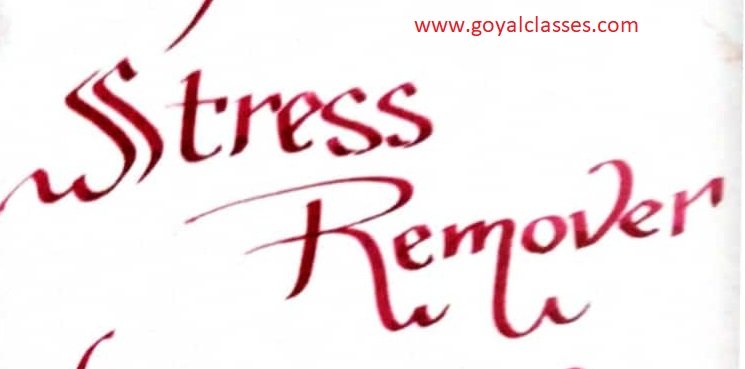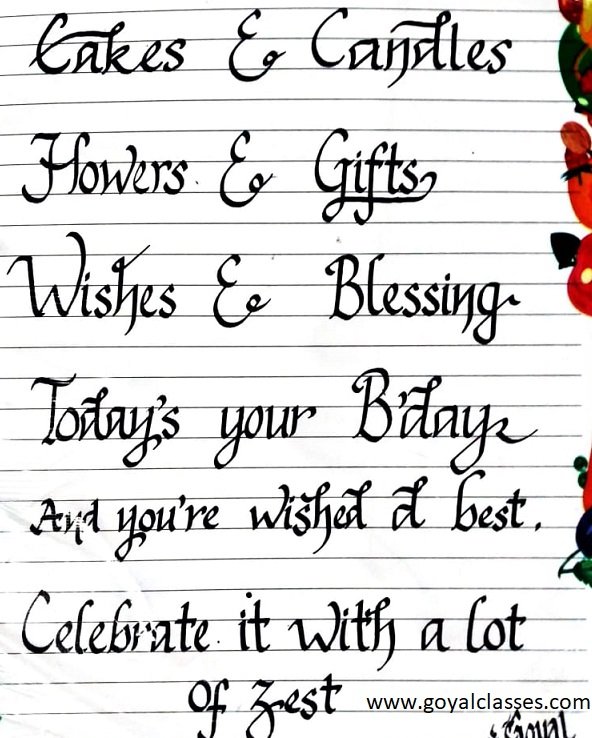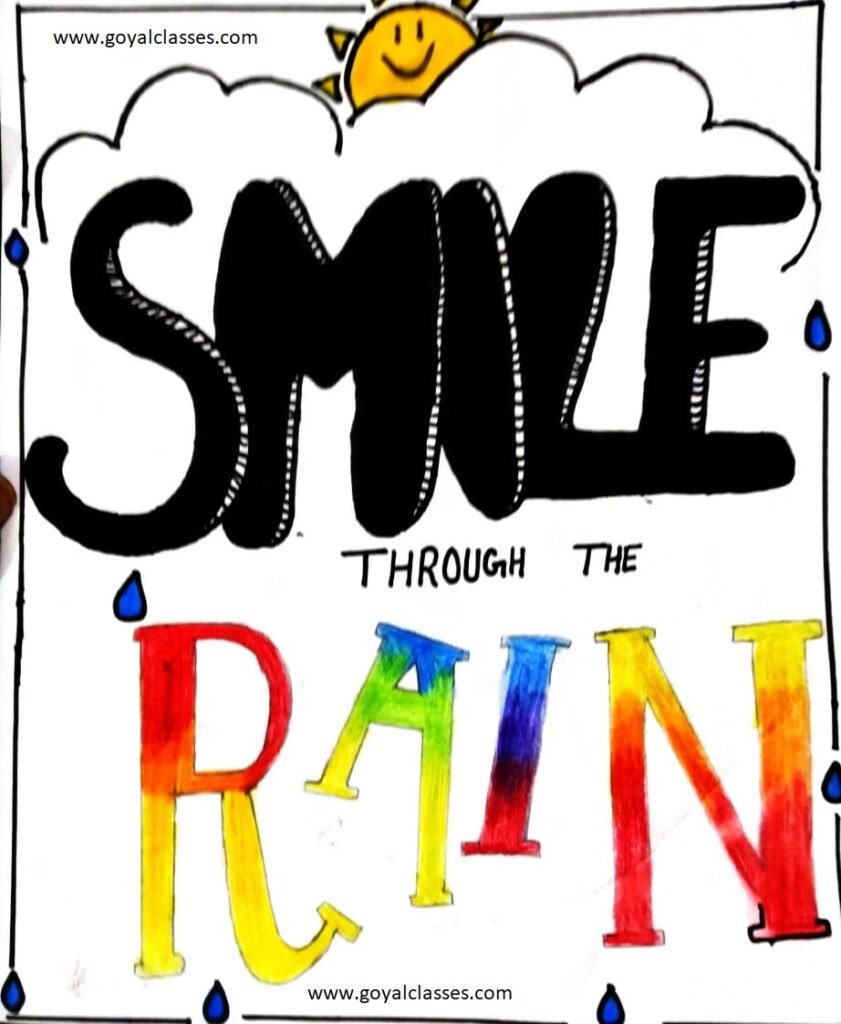What is calligraphy?
Calligraphy letters are made by writing separate strokes and lifting the pen between each one. Calligraphy is a visual art related to writing. It is the design and execution of lettering with a pen, ink brush, or other writing instrument. Contemporary calligraphic practice can be defined as “the art of giving form to signs in an expressive, harmonious, and skillful manner.

Calligraphy is more than ‘beautiful handwriting’ or ‘ornate lettering techniques.’
Calligraphy is the art of forming beautiful symbols by hand and arranging them well. It’s a set of skills and techniques for positioning and inscribing words so they show integrity, harmony, some sort of ancestry, rhythm and creative fire.
“What is calligraphy?” — “Beautiful handwriting.”
Not exactly and not entirely. Calligraphy means more than just beautiful handwriting.
True, the Greek derivation of ‘calligraphy’ translates simply as ‘beautiful writing’. But the word has taken on a larger meaning.
Bear in mind that the first goals of handwriting are to be quickly and easily written and accurately read. Beauty, personality and artistic impact are not as important in handwriting as clarity and speed.
So, although calligraphy is a kind of handwriting, and some handwriting is calligraphic in appearance, they are not the same. It’s the difference between ‘writing as an art form’ and ‘artistic-looking handwriting’. Calligraphy aims to produce an ‘art’ reaction, in which a deeper meaning is communicated from artist to viewer, and the viewer feels invited to think a new thought in response. Handwriting, by contrast, aims to be read.
“What is calligraphy?” — “It’s lettering that’s done by hand.”
Well, no. Calligraphy is not exactly the same as ‘lettering.’

Lettering is a bigger subject than calligraphy: it is everything to do with the formation and use of alphabet letters to communicate meaning, and so it involves typography, sign-writing, graffiti, graphic design and many other disciplines.
Yes, calligraphy requires good letter-formation, and so calligraphy is a form or mode of lettering by hand. But ‘lettering’ and ‘calligraphy’ are still different disciplines.
Lettering can be excellent as lettering without having to be a piece of individual art (which is what calligraphy aims for). And, on the other hand, Chinese calligraphy (for example) can be the most beautiful art, but it doesn’t involve any kind of alphabet letters 🙂
There is a big overlap between calligraphy and lettering. But their purposes aren’t the same.
The fundamental calligraphy tools..
- page: the writing surface (paper, vellum, wall, mug, signpost, your wrist, etc)
- ink: any liquid color for application
- nib (or brush) on a handle
And (not to be forgotten) your body: your sitting position, the tension (or not) in your back, the freedom (or not) of your writing arm, where you place your weight on the writing surface, etc. Calligraphy traces movement in space and that movement is very much your own.
These four, plus the relationships between them, are the material ingredients of calligraphy.
Pens and brushes
The principal tools for a calligrapher are the pen and the brush.
Calligraphy pens write with nibs that may be flat, round, or pointed. For some decorative purposes, multi-nabbed pens—steel brushes—can be used.

Pointed Pen
This type of Calligraphy is mastered with a pointed pen nib. Moreover, it is available with a distinct nib in a separate holder. Pointed Pen calligraphy type is beneficial in achieving thin hairlines and thick strokes. It’s quite fun as well as therapeutic. Moreover, this calligraphic style is versatile and dynamic. So, one can practice it for writing even on rough and poor covers. It improves its foundation by practicing the basics.
Broad Edge
You should use flat tip nibs to practice for Broad Edge. You should keep the pen at a 0-degree angle for a thin line. Moreover, you can draw a straight line as well. While going down at the same angle produces a thick line. All the thick and bold writing styles like Gothic Scripts, Blackletter, Italic, and Uncial falls under this calligraphy type. Broad Edge Pen has two parts –
- Pen holder
- Broad edge nib
Faux
You can apply Faux Calligraphy type with different writing instruments including chalk, marker, or even the ballpoint pen. Faux style is writing words in cursive or imitating the calligraphic style. It’s also called fake calligraphic style. It’s simple and fun to practice. Also, the magic is created by sharpening on adding the thickness of the down stroke. So, you can use it for the following material to practice faux calligraphy type –
- Wood
- Surfaces of walls
- Chalkboards
- Clothing
- Glass
- Murals

Brush Pen
You can do Brush Pen Calligraphy type with a Calligraphic pen or marker having flexible tip that is long tapered with steady ink flow. This calligraphic style is super affordable because it requires just a pen and paper.
If you want a light stroke, you don’t really have to include much force on the pen while stretching upward. However, for a thick stroke, while proceeding downwards, you require to use some pressure on the pen.
Western
Western Calligraphy type came in the 10th century and is of many different types popular in the western hemisphere of the globe. It was mostly used in the Roman Empire. However, the old style of western calligraphy type uses-
- Brush
- A flat ballad
- Water-based ink
- High-quality paper
- A round-nipped pen
- Parchment

Benefits of Calligraphy
Stay creative and mindful
One of the biggest benefits of calligraphy is that it helps you start creative and mindful. If you are running out of ideas or feeling bored, you can use calligraphy to do some light art. It eventually brings out creative ideas and helps you stay active and mindful. You’ll feel a lot more productive and happy after doing it.
Can help you make money
One more calligraphy benefit is that you can earn money while following your calligraphy passion at the same time. You can teach others through workshops, live shows, and courses. You can sell your writing style to brands that want to have unique and captivating logos. Your writing can be used in banners, billboards, and flyers to stand out. You can also create calendars, journals, bullet diaries, and doodle art. All of these are so much in demand in the market. All your hard work and effort will pay you.
How to learn Calligraphy?
Get Calligraphy book
There are so many calligraphy books in the market available for practicing it. To begin with the fundamentals, you are required to manage your writing angles and unique strokes. A calligraphy book will help you a lot. After all, they have instructions discussed to assist you with the art.
Practice regularly
Practice is important for developing muscle memory. Slow and focused practice will help retail the memory and make you better at it. Have hope and persistence while you take this, and ultimately, everything will finally be getting finer over time.
Choose right tool
Choosing the right tool for your hand can be a challenge, but once you’re done selecting, you’ll be good to go. But the actual conflict is discovering the ideal set which goes well with your hand and works easily. Dip pens are of 2 kinds –
- Straight
- Oblique
The oblique pen helps in an angular moment of the pen and helps in good calligraphic style.

Choose a style
There are so many styles of scriptwriting. Choose which you find easy or creative to start with. As a beginner, you can start with something easy and handy. Brush pen calligraphy has got an effective style that is easy to practice. You shouldn’t skip the basics of lettering if you’re serious about learning it.
Do’s and Don’t’s
Do’s of learning calligraphy
- Pick a good set of tools for practicing calligraphic styles and forms.
- Learn the basics of it.
- Built the foundation and then moved ahead with the next step.
- Use good quality paper. A smooth and thick paper will help pens to move smoothly.
- Try traditional ways of calligraphy first before going for the digital.
- Research about the materials to use before purchasing them from the market.
- Try different fonts of calligraphic art and have fun doing it.
Don’ts of learning calligraphy
- Don’t rush the steps and skip to the next part.
- Don’t use poor quality of product from the market.
- Never let your nibs dry out. Keep refilling it.
- Don’t force yourself into it if you’re least interested in it.
